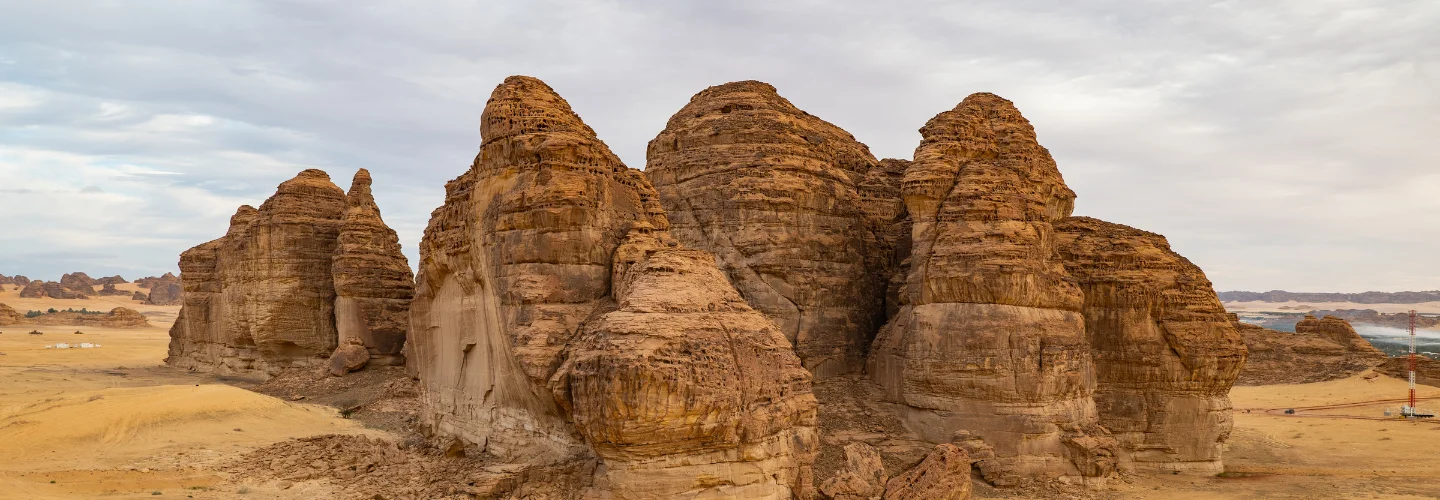Al Ula is the best-known destination in Saudi Arabia for a reason. The stunning area in the kingdom’s northwest is scattered with golden rock formations, lush citrus farms and the remains of several ancient kingdoms. The most famous ruins, Mada’in Saleh, contain clusters of 2,000-year-old Nabatean tombs. Think of Jordan’s Petra, minus the crowds. There’s one catch: The ruins are closed until the end of 2020 for a project preparing them to receive a bigger flow of tourists. However, they’ll be partially accessible from December until March for tourists attending the government’s Winter At Tantora festival, which brings a series of concerts and pop-up restaurants to the area.
Al Ula is a place of extraordinary human and natural heritage. We invite you to come journey through a living museum of preserved tombs, sandstone outcrops, historic dwellings and monuments, both natural and human-made, that hold 200,000 years of largely unexplored human history.
The vertical sandstone cliffs surrounding the valley provide ample surfaces for rock art, making the governorate one of the richer petroglyph regions in the Kingdom. Ar-Ruzeiqiah is a mountain in the southern part of the governorate, with a large petroglyph panel displaying hundreds of images, including depictions of hunting scenes with humans and a variety of animals.


Comment (0)